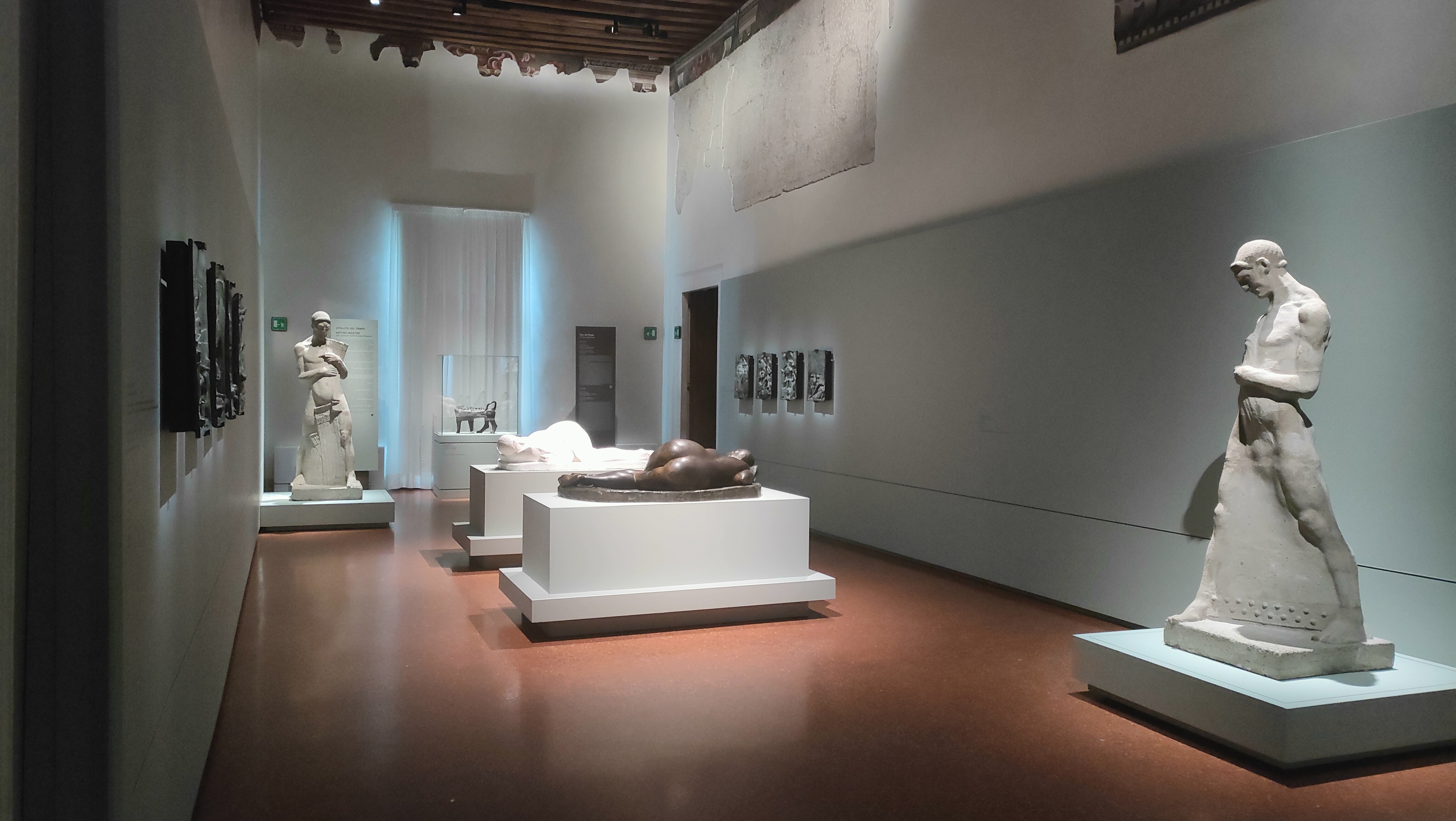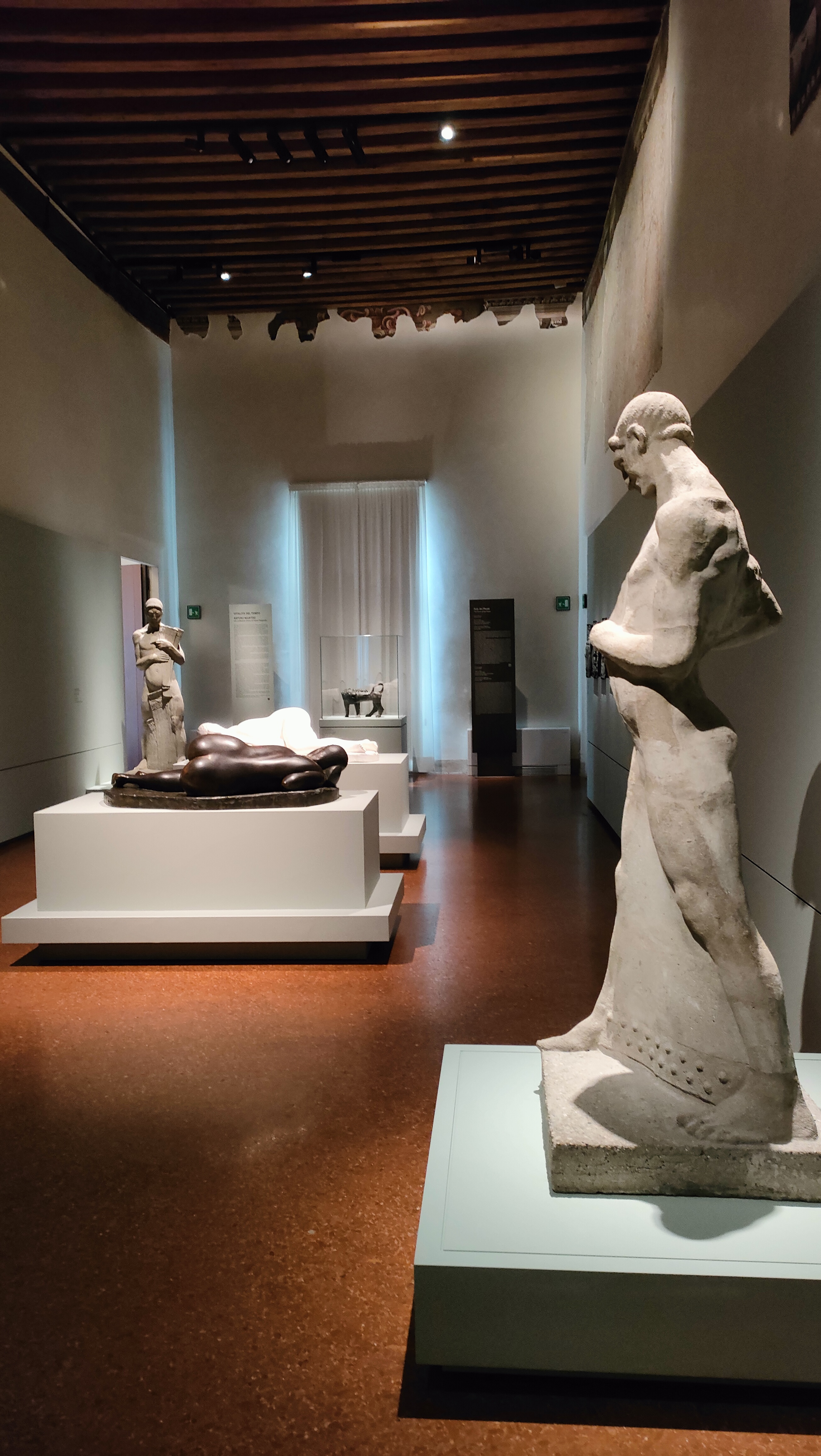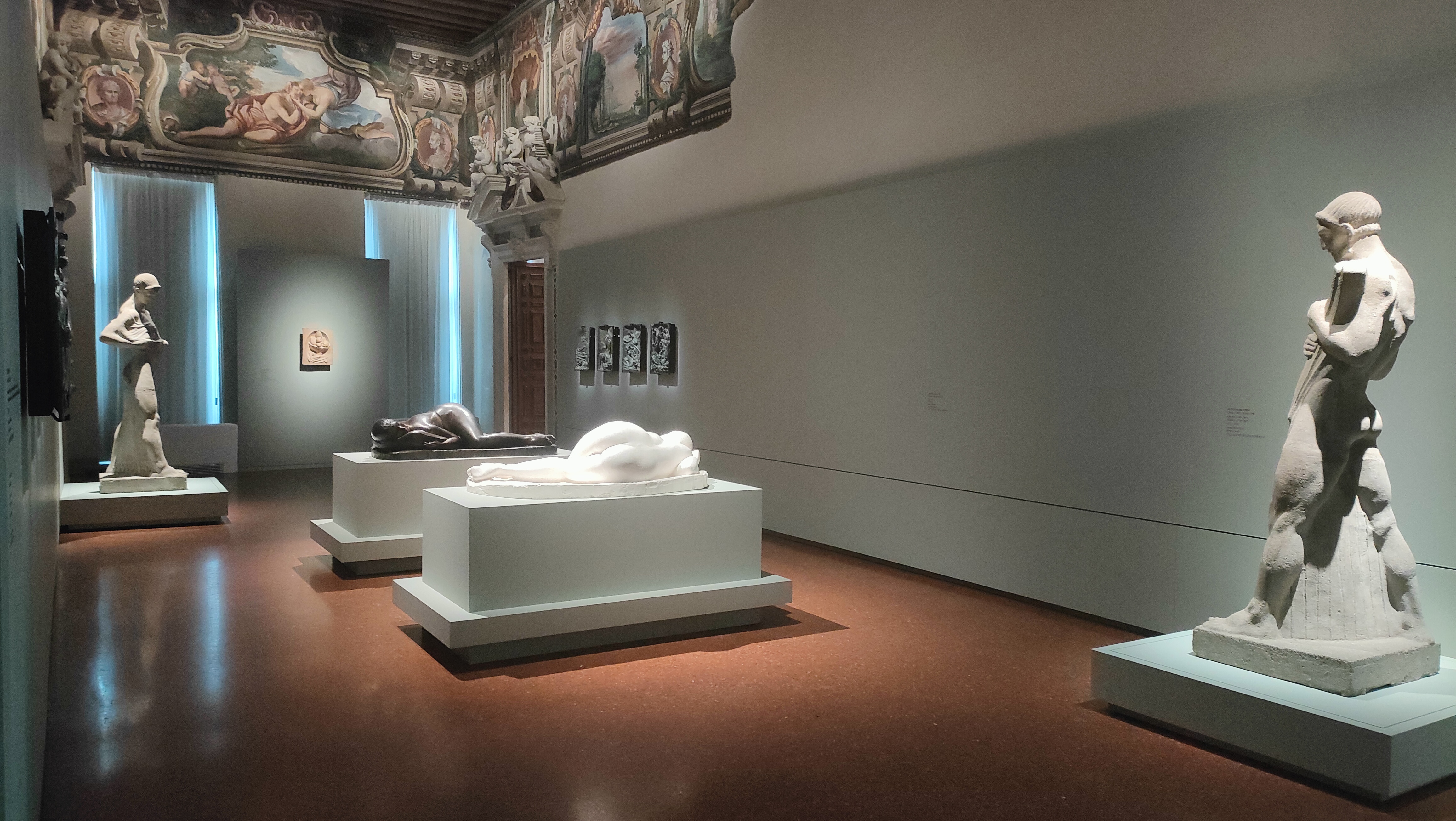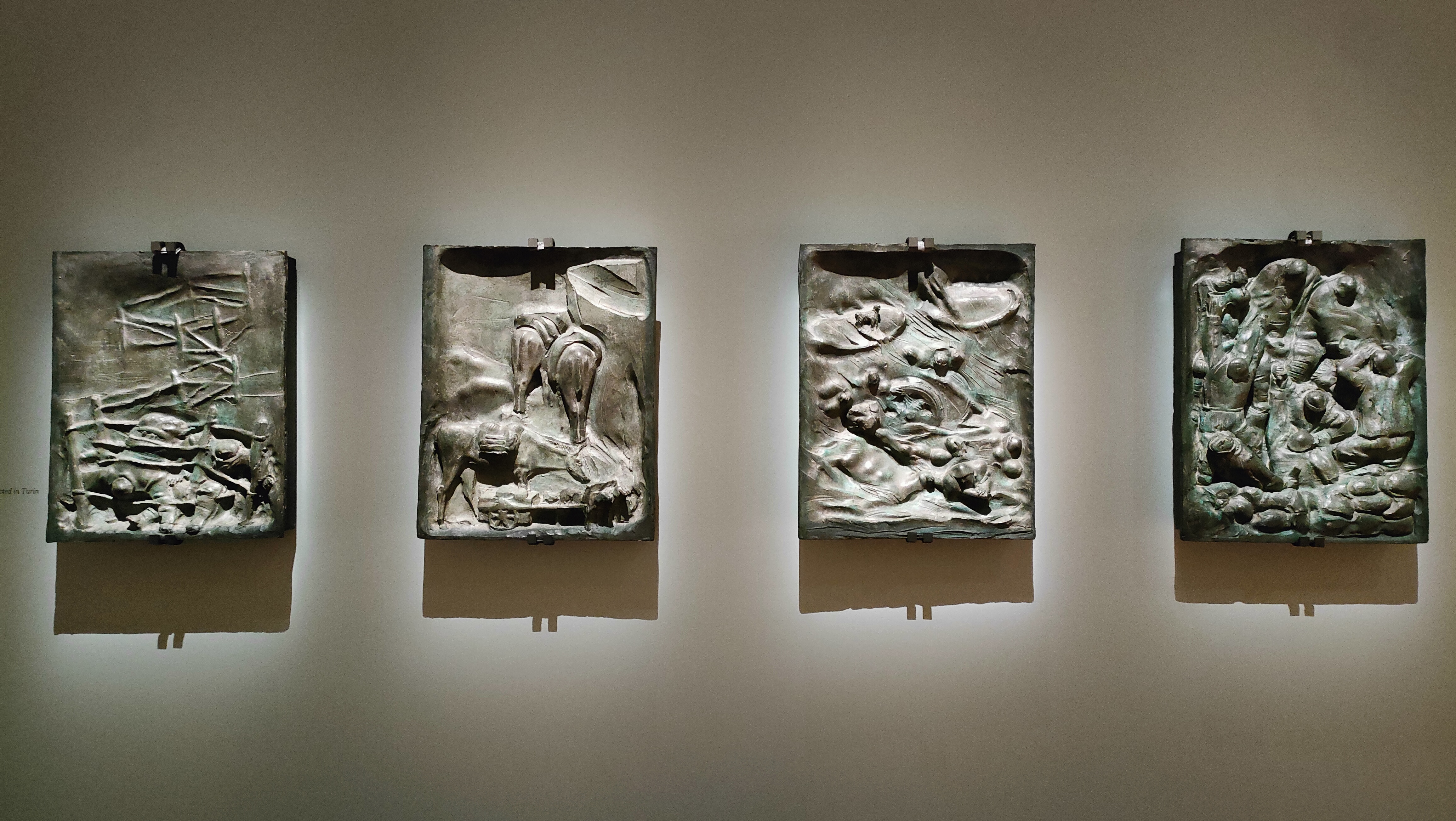"Vitality of time. Arturo Martini in the collections of Intesa Sanpaolo" in Vicenza
Gallerie d'Italia - Vicenza
From July 6 to November 16, 2025
As part of the Vitality of Time project, dedicated to promoting Intesa Sanpaolo's modern and contemporary art collections, the Sala dei Fauni hosts a group of fourteen works by sculptor Arturo Martini. The works come from several collections which have converged into the Group's artistic heritage over the years.
The main features of the display, conceived by associate curator of the collections, Luca Massimo Barbero, are the two splendid sculptures portraying La Pisana, one of the most fascinating figures created by Arturo Martini. Dedicated to the main female character in Ippolito Nievo's novel Confessioni di un italiano (Confessions of an Italian), following an interest in the Italian writer shared with a circle of friends, La Pisana portrays a type, that of the reclining figure, which Martini interpreted in several of his works between the 1920s and 1930s, qualifying it with a natural and truthful style. The fluidity of its forms and the sensuality of the pose make it one of his most accomplished works, characterised by metaphysical beauty. Two versions of the sculpture are presented, one made of gypsum, created by Martini in around 1930, originating from the Banco Ambrosiano Veneto collection, and one of the six examples (the first of the six to be precise) in bronze, cast posthumously with the authorisation of the sculptor’s heirs, from the Luigi and Peppino Agrati Collection - an encyclopaedic collection of contemporary art built up between the 1960s and the 1980s and brought together, thanks to the legacy of Cavalier Luigi Agrati, in the historical-artistic heritage protected and exhibited by the Bank.
The exhibition also includes a group of works from the Cassa di Risparmio di Venezia: collection: two sculptures in cement paste and eight bronze bas-reliefs. The two cement paste sculptures represent the Allegory of the sea (in which Hercules is shown holding the skin of a lion and a shell) and the Allegory of the land (portraying a farmer holder a sheaf of wheat), created in around 1910, dating back to the time when Martini worked at the Gregorio Gregory ceramics workshop in Treviso. It was thanks to Gregory and other patrons from Treviso that Martini undertook long educational trips to Munich and Paris in the years that followed, bringing him into contact with European culture. The formal simplification, elongated figures, schematised features and deliberate archaism that characterised Martini's more mature work, while alluding to the classical Mediterranean world and its statues, express an anti-rhetorical attitude that contributed to the renewal of Italian plastic art.
The eight bronze bas-reliefs were created for the bozzetto submitted to the competition for the monument to the Duke of Aosta to be erected in Turin (1934), which was, however, entrusted to another sculptor. They belonged to Egle Rosmini, the artist's partner from 1930 until her death, and were purchased by the Cassa di Risparmio di Venezia in July 1965. The panels offer a pained expressive and compositional expression of various episodes in the lives of soldiers during the First World War, relating to the battles at the front in Piave.
The Sala dei Fauni also hosts the bronze sculpture portraying the Lion of Monterosso – Chimera, which belongs to Fideuram. While lacking the main characteristics of the mythological monster (a goat's head on its back and a snake's tail), this sculpture is most probably also called Chimera to indicate its link to the “Chimera of Arezzo”, an Etruscan bronze statue from the 5th century BC. (Martini's predilection for Etruscan art is well known). Featuring a skilful use of chiaroscuro effects in the shaggy texture of the back and head, the Chimera seems to evoke a lion with gaping jaws and an aggressive stance, with its head turned backwards as if it had been caught unawares. The reference to a lion is actually also linked to a commission assigned to Martini in the early 1930s by his main collectors, the lawyer Arturo Ottolenghi and his wife, the sculptress Herta von Wedekind. At their villa in Monterosso near Aqui Terme, as well as exhibiting masterpieces by the sculptor including Il Figliuol Prodigo (the Prodigal Son) and La Pisana, the couple commissioned the artist to create an Adam and Eve in stone for the central avenue of the grounds and a Lion to be installed in the entrance to the villa. After submitting various proposals, Martini made the so-called Lion of Monterosso in stone for Ottolenghi, while two bronze versions - one of which later became part of the Fideuram collections - were exhibited at the Rome Quadriennale in 1935.
The exhibition is completed by a terracotta high relief, from the UBI Banca Group, featuring a still life, which bears witness to Martini's experience in the Valori Plastici group in the early 1920s. Apparently of great simplicity, it marks a return to plasticism after the experimental avant-gardes of the early 20th century.





